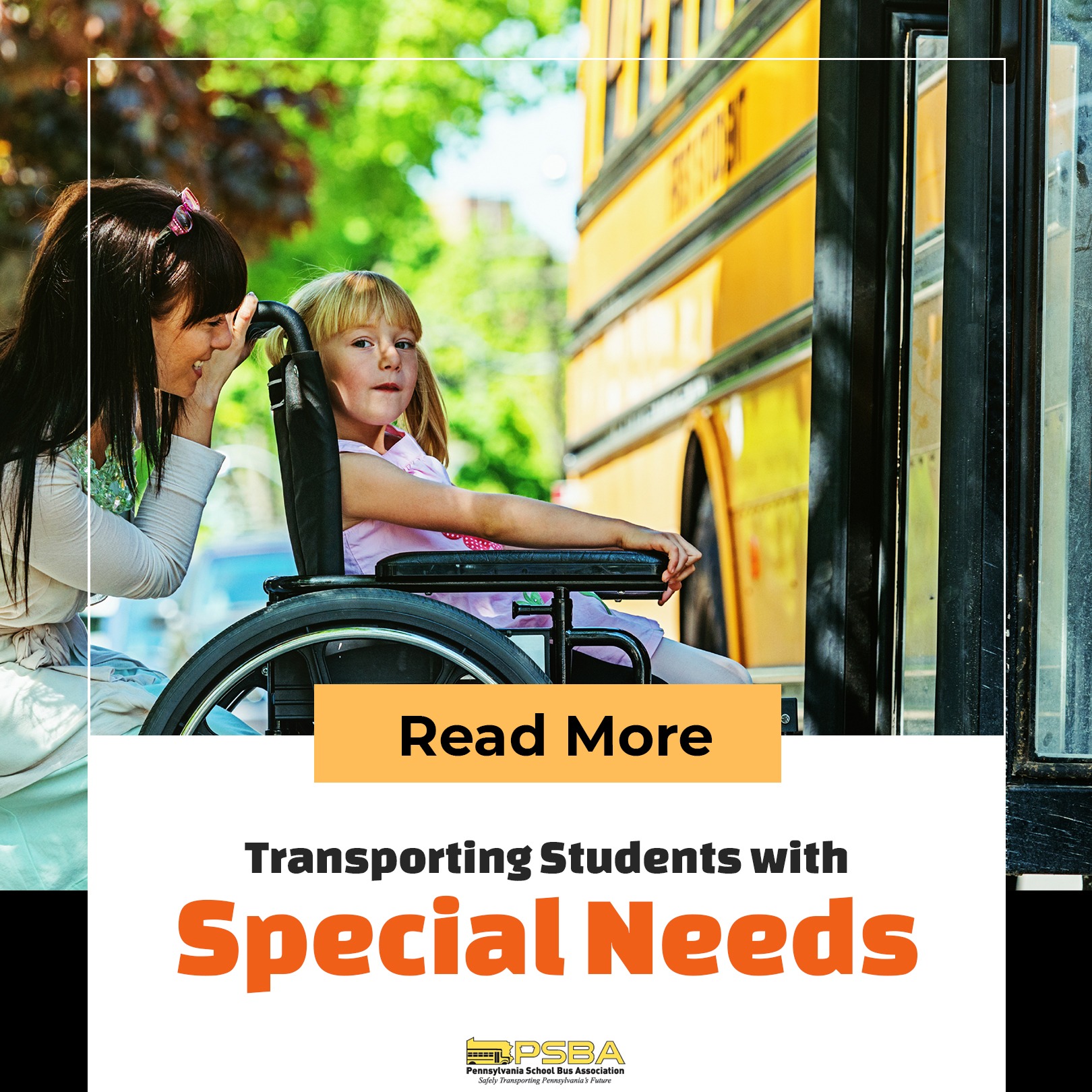One of the traits of a great bus driver is concern towards all student passengers, but most especially patience and compassion towards students with special needs and disabilities.
In different states, a school district may need specialized transportation to a student with special needs who is not under special education. The school administration system has to ensure that children with disabilities or special needs are transported to and from school safely. Thus, they also have to make sure that such students feel safe and comfortable while they’re on the school bus.
School bus monitors assist students in getting onto and alight from the bus, loading and unloading their wheelchairs, and tending to their emotional needs, among other duties. But in the absence of a school monitor or attendant, a school bus driver can also act like one.
Children who have types of disabilities like deafness, blindness, deaf-blindness, or hearing impairment (not deaf), should be treated accordingly and sensitively as well as made to feel that they’re not much different from the so-called “normal” students on the bus.
Not all deaf students and hard-of-hearing students communicate in the same manner. Some may use only sign language or lip-reading, while others use both. School bus drivers should establish excellent and consistent communication with them. In that case, they should learn enough basic signs to effectively communicate with the deaf and hard-of-hearing students. Drivers should try fingerspelling, too, as another communication tool, but only while the bus is not moving.
If the student is blind or deaf-blind, specialized planning is required to provide safe transportation. Consistency and proper management are the keys to minimizing transportation problems. The school bus should have an assigned seat for them. As for the school bus drivers, they should communicate with the student and assist them in getting on and off the bus. This routine is the same every day until the student is used to it. People with hearing and visual impairments usually react positively to routine and get easily distracted and upset by the sudden changes. So, again, consistency is the key.
For any student with special needs, the school district should carefully assess each student to provide them with the appropriate level of assistance. Some students require extensive assistance, while others need little or none as they can still function independently. But as part of their duty, the school district has to ensure the safety of every special-needs student. Maintaining a consistent daily routine (including the same seat assignment) and direct and friendly communication are some of the ways to make sure that students with special needs feel safe and comfortable while they’re on the bus.
Learn other Ways School Bus Services Benefit Their Communities to help you decide if becoming a school bus driver is a good fit. Then, if you’re interested in the possibility, check out https://schoolbushero.com/jobs for school driver career opportunities now!

